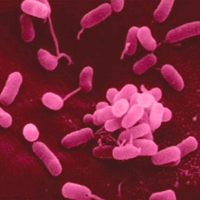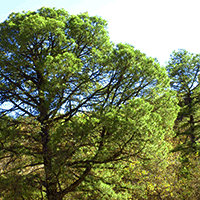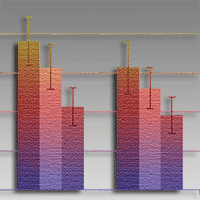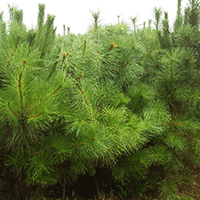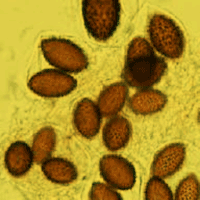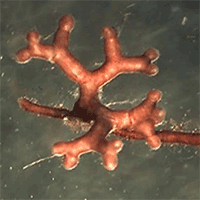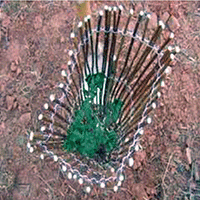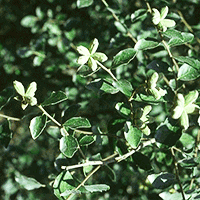
Forest litter as the mulch improving growth and ectomycorrhizal diversity of bare-root Scots pine (Pinus sylvestris) seedlings
Algis Aučina (1) , Maria Rudawska (2), Tomasz Leski (2), Audrius Skridaila (1), Izolda Pašakinskiene (1), Edvardas Riepšas (3)
iForest - Biogeosciences and Forestry, Volume 8, Issue 4, Pages 394-400 (2014)
doi: https://doi.org/10.3832/ifor1083-008
Published: Aug 20, 2014 - Copyright © 2014 SISEF
Research Articles
Abstract
In this paper, we report the influence of pine, oak and spruce forest litter on the growth and ectomycorrhizal (ECM) formation of Scots pine seedlings after the first growing season in a bare-root forest nursery. The mixture of collected forest litters and humus were used to obtain a 20-cm mulching layer on the prepared seedbeds. The concentrations of all nutrients and the C/N ratio of growth media were significantly higher in forest litter treatments than in negative control represented by mineral soil without litter. Addition of each forest litter type significantly enhanced pine seedling height and root-collar diameter compared to negative control. A significant positive influence on dry mass of stem, needles, roots and total dry mass of the seedling has been found only for pine litter. Based on molecular identification, seven ECM fungal taxa (Wilcoxina mikolae, Suillus luteus, Cenococcum geophilum, Meliniomyces bicolor, Laccaria laccata, unidentified Atheliaceae, unidentified Ascomycetes) were distinguished in the observed mycorrhizal communities. Each forest litter type significantly increased the total number of mycorrhizal tips and ECM fungal diversity compared to the control soil. However, results showed a lack of significant differences in species composition and relative abundance of ECM fungi between different litter types. Such result suggests that forest litter has not been a key source of inoculum for tested fungal species, as root systems of all pine seedlings from different litter types were dominated by a few nursery- adapted ECM fungi, probably originating from natural air-borne inoculum. Our data rather indicate that forest litter considerably improves environmental conditions for development of ECM fungi previously present in the nursery soil. Therefore, any of the forest litter types used in our studies may be able to promote planting stock quality on a small scale in the nursery phase.
Keywords
Authors’ Info
Authors’ address
Audrius Skridaila
Izolda Pašakinskiene
Botanical Garden of Vilnius University, 43 Kairenu Str., LT-10239 Vilnius (Lithuania)
Tomasz Leski
Institute of Dendrology, Polish Academy of Sciences, 5 Parkowa Str., 62-035 Kórnik (Poland)
Department of Sylviculture, Aleksandras Stulginskis University, 11 Studentu Str., Akademija, LT-53361 Kaunas district (Lithuania)
Corresponding author
Paper Info
Citation
Aučina A, Rudawska M, Leski T, Skridaila A, Pašakinskiene I, Riepšas E (2014). Forest litter as the mulch improving growth and ectomycorrhizal diversity of bare-root Scots pine (Pinus sylvestris) seedlings. iForest 8: 394-400. - doi: 10.3832/ifor1083-008
Academic Editor
Silvano Fares
Paper history
Received: Jul 24, 2013
Accepted: Apr 29, 2014
First online: Aug 20, 2014
Publication Date: Aug 02, 2015
Publication Time: 3.77 months
Copyright Information
© SISEF - The Italian Society of Silviculture and Forest Ecology 2014
Open Access
This article is distributed under the terms of the Creative Commons Attribution-Non Commercial 4.0 International (https://creativecommons.org/licenses/by-nc/4.0/), which permits unrestricted use, distribution, and reproduction in any medium, provided you give appropriate credit to the original author(s) and the source, provide a link to the Creative Commons license, and indicate if changes were made.
Web Metrics
Breakdown by View Type
Article Usage
Total Article Views: 54422
(from publication date up to now)
Breakdown by View Type
HTML Page Views: 45102
Abstract Page Views: 3547
PDF Downloads: 4396
Citation/Reference Downloads: 26
XML Downloads: 1351
Web Metrics
Days since publication: 4136
Overall contacts: 54422
Avg. contacts per week: 92.11
Citation Metrics
Article Citations
Article citations are based on data periodically collected from the Clarivate Web of Science web site
(last update: Mar 2025)
Total number of cites (since 2015): 8
Average cites per year: 0.73
Publication Metrics
by Dimensions ©
Articles citing this article
List of the papers citing this article based on CrossRef Cited-by.
References
Colour atlas of ectomycorrhizae. Einhorn-Verlag Eduard Dietenberger, Munich, Germany.
Gscholar
Seedlings for reforestation. In: “Forest Nursery from A to Z” (Wesoly W, Hauke M eds). CILP, Warsaw, Poland, pp. 321-368. [in Polish]
Gscholar
Diversity-functioning relationships in ectomycorrhizal fungal communities. In: “The Fungal Community: Its Organization and Role in the Ecosystem (3rd edn)” (Dighton J, White JF, Oudemans P eds). CRC, Boca Raton, FL, USA, pp. 383-398.
Gscholar
Pušies selekcija Lietuvoje [Breeding of pines in Lithuania]. Lutute, Kaunas, Lithuania, pp. 352. [in Lithuanian with English summary]
Gscholar
World reference base for soil resources. International Soil Reference and Information Centre, Food and Agriculture Organization, United Nations, Rome, Italy, pp. 88.
Gscholar
Wybrane zagadnienia szkólkarstwa lesnego. [Selected aspects in the forest nursery practice]. Sylwan 2: 5-7. [in Polish with English summary]
Gscholar
PAST: paleontological statistics software package for education and data analysis. Palaeontologia Electronica 4: 9.
Gscholar
Impacts of timber harvesting on soil organic matter, nitrogen, productivity, and health of inland Northwest forests. Forest Science 43: 234-251.
Gscholar
UNITE: a database providing web-based methods for the molecular identification of ectomycorrhizal fungi. New Phytologist 166: 1063-1068.
CrossRef | Gscholar
Mycorrhizal fungi in terrestrial habitats. In: “The Mycota - IV Environmental and Microbial Relationships” (Wicklow DT, Soderstrom B eds). Springer-Verlag, Berlin, Germany, pp. 281-301.
Gscholar
Lithuanian statistical yearbook of forestry. Lithuanian State Forest Management Institute, Kaunas, Lithuania, pp. 48.
Gscholar
Lithuanian statistical yearbook of forestry. Kaunas, Lithuania, pp. 112.
Gscholar
Soil ecology in northern forests: a belowground view of a changing world. Cambridge University Press, Cambridge, UK, pp. 268.
Gscholar
Ecology of site preparation to improve performance of planted white spruce in northern latitudes. In: Proceedings of the “3rd International Workshop: Forest regeneration at high latitudes: experiences from northern British Columbia” (Murray M ed). Prince George (British Columbia, Canada) 29 Aug - 1 Sep 1981. Misc. Rept. No. 82-1, School of Agriculture and Land Resource Management, University of Alaska and USDA Forest Service, Pacific Northwest Forest and Range Experiment Station, Portland, OR, USA, pp. 25-32.99.
Gscholar
Ecology and biogeography of Pinus. Cambridge University Press, Cambridge, UK, pp. 548.
Gscholar
Organic matter management in forest nurseries: theory and practice. Nursery Technology Cooperative, Oregon State University, Corvallis, OR, USA, pp. 65.
Gscholar
Mycorrhizal status of Pinus sylvestris L. nursery stock in Poland as influenced by nitrogen fertilization. Dendrobiology 46: 49-58.
Gscholar
Mycorrhizal symbiosis (3rd edn). Academic Press, London, UK, pp. 768.
Gscholar
STATISTICA for Windows (Computer Program Manual). StatSoft, Tulsa, OK, USA, pp. 378.
Gscholar
Amplification and direct sequencing of fungal ribosomal RNA genes for phylogenetics. In: “PCR protocols: a guide to methods and applications” (Innis MA, Gelfaud DH, Sninsky JJ, White TJ eds). Academic Press, San Diego, CA, USA, pp. 315-322.
Gscholar


